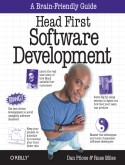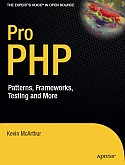XSLT (Second Edition) Ссылки
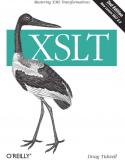

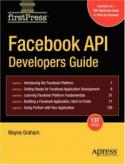
This book is for web developers wanting to learn how to leverage the API in their own applications or how to create bespoke applications in Facebook. It will also appeal to Facebook users who are interested in using the API to develop their own programs. The code in the book is aimed at the beginner–to–intermediate level, so you don’t need to be a pro to use it, but some programming or web development experience is recommended.
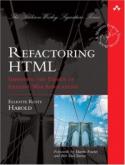
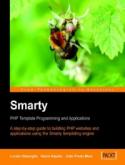
Smarty is a templating engine for PHP. Designers who are used to working with HTML files can work with Smarty templates, which are HTML files with simple tags while programmers work with the underlying PHP code. The Smarty engine brings the code and templates together. The result of all this is that designers can concentrate on designing, programmers can concentrate on programming, and they don't need to get in each others way so much. Even if you are developing a site on your own, Smarty is a powerful way to make your code clearer to you and others, as well as easier to debug and modify later.
This book is a comprehensive guide to all aspects of using Smarty. It will help you to:
-Install and configure Smarty on your Web server
- Understand how Smarty affects your web site architecture, and build site foundations that make the most of what Smarty offers
- Designers will learn to work with templates that contain variables
and logic, to modify layouts or content of Smarty web sites
- See how Smarty caching can improve the performance of your sites
- Develop custom Smarty functions and plug-ins to incorporate into your templates
Using a step-by-step approach based on realistic examples, the expert authors show you how to use Smarty in your own PHP development. The book is ideal for PHP developers who are new to Smarty, and for web designers who are working with PHP developers who are using Smarty.

Using Trolltech's Qt you can build industrial-strength C++ applications that run natively on Windows, Linux/Unix, Mac OS X, and embedded Linux without source code changes. Now, two Trolltech insiders have written a start-to-finish guide to getting outstanding results with the latest version of Qt: Qt 4.3.
Packed with realistic examples and in-depth advice, this is the book Trolltech uses to teach Qt to its own new hires. Extensively revised and expanded, it reveals today's best Qt programming patterns for everything from implementing model/view architecture to using Qt 4.3's improved graphics support. You'll find proven solutions for virtually every GUI development task, as well as sophisticated techniques for providing database access, integrating XML, using subclassing, composition, and more. Whether you're new to Qt or upgrading from an older version, this book can help you accomplish everything that Qt 4.3 makes possible.
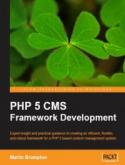
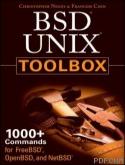
This handy, compact guide teaches you to use BSD UNIX systems as the experts do: from the command line. Try out more than 1,000 commands to find and get software, monitor system health and security, and access network resources. Apply the skills you learn from this book to use and administer servers and desktops running FreeBSD, OpenBSD, NetBSD, or any other BSD flavor.
Expand your BSD UNIX expertise in these and other areas:
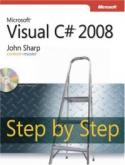
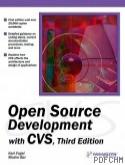
The best available compromise is the concurrent versioning system (CVS), which introduces proctored code merging into source code management. CVS is ideally suited for worldwide open-source development, and the world is ready for monographs that address the management issues that Per Cederqvist explicitly avoided in his fine 164-page postscript manual distributed with the CVS tar-ball. What is the role of a maintainer/manager in establishing test protocols for code merges? What minimal functional level of developer communications is necessary for merges to remain stable? Is a maintainer-less release possible?
These questions go largely unanswered in Karl Fogel's new Open Source Development with CVS. Fogel's 300-page book consists of chapters alternating between CVS basics and common code maintenance issues. He includes a few anecdotes from open-source lore and lots of nonspecific commonsense guidelines on team software development.
Fogel is at his best when he is engaging us in thinking about what should and should not be under CVS control. He points out that complex relationships exist between developing code and its dependencies on intimately related applications, such as build tools themselves (gcc, autoconf) or partner applications (e.g., the server's client or the client's server). His brief discussion of strategies is too short to be satisfying.
Frustratingly, this book is chock-full of postmodern self-indulgences, such as his boasting reverence for technological ignorance. The discipline needed by good maintainers is missing here; Fogel's informal prose is often grating, and his copious parenthetical remarks are distracting or bullying (they sure are); one wonders where his editor was. Ultimately, his management arguments boil down to an endorsement for the benevolent dictatorship model--a safe conclusion, but one that seems not to use CVS's merging capability for all it's worth. To the question of how to run a project, he responds, "Well, we're all still trying to figure that out, actually." True, and he isn't there yet, but at least he has the questions right. --Peter Leopold --This text refers to an out of print or unavailable edition of this title.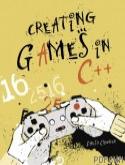
The first video game I ever played (at age 13) was Pong. It was a very simple ping-pong simulation. During my teenage years, a few, more advanced games appeared on the market. Most notable were the Atari games such as Missile Command, a nuclear warfare simulator. When I was 19, I went to live for a couple of years in Japan. There I discovered a whole new worldseveral, in fact.
